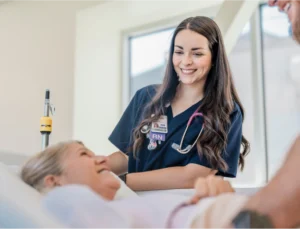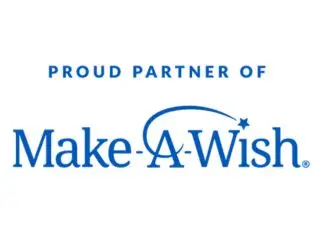 A continuing challenge for health care professionals, whether a college pharmacy technician, dentist, physician or nurse, is communicating with other medical personnel in order to successfully provide the best treatment for patients. This challenge is exacerbated due to the fact that most medical professionals have to constantly consider the reputation of their practice. Medical professionals need security when communicating with their colleagues to ensure the integrity of their online presence. However, in a technologically immersed world, sharing information and creating strong collaborative connections is not only beneficial to those looking to expand their personal medical acumen, but also to those responsible for assisting patients. This of course goes well beyond simply having the ability to Google symptoms of illness or tweet short questions at colleagues. Physician collaboration is a way to find the best course of treatment for individuals, and now, thanks to technological advances in the medical field, staff members aren’t required to be in the same physical location to do so.
A continuing challenge for health care professionals, whether a college pharmacy technician, dentist, physician or nurse, is communicating with other medical personnel in order to successfully provide the best treatment for patients. This challenge is exacerbated due to the fact that most medical professionals have to constantly consider the reputation of their practice. Medical professionals need security when communicating with their colleagues to ensure the integrity of their online presence. However, in a technologically immersed world, sharing information and creating strong collaborative connections is not only beneficial to those looking to expand their personal medical acumen, but also to those responsible for assisting patients. This of course goes well beyond simply having the ability to Google symptoms of illness or tweet short questions at colleagues. Physician collaboration is a way to find the best course of treatment for individuals, and now, thanks to technological advances in the medical field, staff members aren’t required to be in the same physical location to do so.
Modern forums for physician communication
Online collaboration is available to a significant portion of the medical staff in the United States. Sermo, a company that connects medical professionals via social media, reaches approximately 270,000 professionals, over a third of the physicians in the U.S.1 Though Sermo is exclusively available to registered physicians,2 it is an expansive platform that can set a precedent for more inclusive networks in the future. The recent passing of the Nurse Practitioner Modernization Act3 will likely make it necessary to include nurse practitioners in such networks as well, though that is subject to speculation. The act goes into effect at the beginning of next year and grants nurses the ability to make a diagnosis and assist patients without the presence of a licensed physician.4 In light of this, nurses must have the ability to ask professional questions regarding patients with the same confidence as doctors. Doximity is another online physician network that allows physicians to stay connected. In some ways Doximity has a broader directory of professionals than Sermo, because it includes a vast array of specialized medical professionals ranging from physical therapists to neurologists to social workers.5 Another primary difference between Doximity and Sermo is that the former identifies medical professionals by name in their directory, encouraging them to own their online presence.6 This lack of anonymity potentially causes wariness in physicians when asking questions.7
InCrowd announces Peer2Peer app
InCrowd, a company providing a specialized on-demand platform for the health care industry, recently announced a new iOS application, dubbed Peer2Peer. The app will allow all health care professionals to query one another anonymously.8 This blind collaboration process gives professionals across various practices the ability to confidently and securely pose questions without causing potential jeopardy to their reputation. Users will be able to receive answers from their colleagues in real time, optimizing efficiency for both physicians and patients.
Electronic health records
Documentation reform is another important aspect of modernizing the way in which physicians interact. Standardized electronic health records, or EHRs, make information potentially easier to access.9 One of the reasons many health care workers are focusing on EHRs is due to financial incentives provided for institutions that can demonstrate they are utilizing EHRs with purpose.10 Demonstrating meaningful use requires meeting various objectives set by Medicare and Medicaid Services, with the intention being that meeting these criteria will result in an improvement in patient care.11 Therefore, properly formatting and using EHRs gives physicians quicker access to information and also encourages them with monetary rewards for their practice. What is clear is that health care professionals across all practices and specialties are finding ways to use technology to try and make communication and collaboration more efficient. Future health care staff can learn to use these programs to directly access a professional network and provide better care for patients. 1http://www.sermo.com/ 2http://www.sermo.com/ 3“The Nurse Practitioner Modernization Law” http://open.nysenate.gov/legislation/bill/S4611A-2013 4“The Nurse Practitioner Modernization Law” http://open.nysenate.gov/legislation/bill/S4611A-2013 5https://www.doximity.com/ 6https://www.doximity.com/ 7“InCrowd Announces Free Physician-to-Physician Question App” Press Release. Media Contact Steven Handy. June 4, 2014. http://www.prnewswire.com/news-releases/incrowd-announces-free-physician-to-physician-question-app-261818261.html 8“InCrowd Announces Free Physician-to-Physician Question App” Press Release. Media Contact Steven Handy. June 4, 2014. http://www.prnewswire.com/news-releases/incrowd-announces-free-physician-to-physician-question-app-261818261.html 9Center for Medicare & Medicaid Services. http://www.cms.gov/Regulations-and-Guidance/Legislation/EHRIncentivePrograms/Meaningful_Use.html 10Center for Medicare & Medicaid Services. http://www.cms.gov/Regulations-and-Guidance/Legislation/EHRIncentivePrograms/Meaningful_Use.html 11Center for Medicare & Medicaid Services. http://www.cms.gov/Regulations-and-Guidance/Legislation/EHRIncentivePrograms/Meaningful_Use.html



